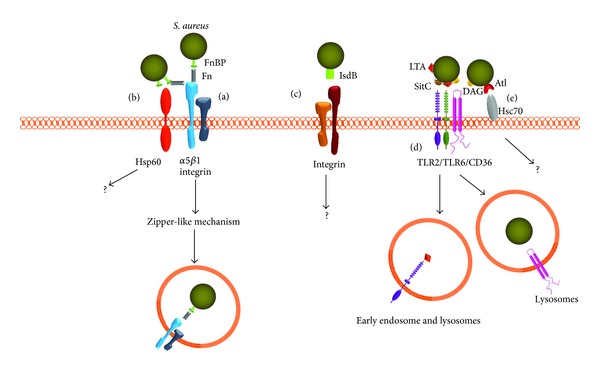Figure 1.

Different receptors and mechanisms involved in S. aureus internalization into nonprofessional phagocytic cells. (a) The first mechanism described for S. aureus internalization involved the α5β1 integrin host receptor and is mediated by bacterial FnBPs via Fn as a linking molecule; bacterial endocytosis is accomplished through a zipper-like mechanism [9, 16, 22, 23]. (b) FnBPs interact directly with host Hsp60 or with integrin and Hsp60 as a coreceptor through a Fn bridge [24], but the mechanism of endocytosis remains unknown. (c) The S. aureus iron-regulated surface determinant-B (IsdB) contributed to invasion, and IsdB most likely interacts with integrins that bind ligands with the RGD motif [25]; however, the endocytic pathway has not been determined. (d) TLR2 is involved in S. aureus internalization. CD36 acts as a coreceptor and is capable of recognizing diacylglycerides, whereas TLR2/TLR6 dimers recognize different PAMPs, such as LTA and SitC [26–28]. In monocytes TLR2 colocalizes with LTA in early endosomes and lysosomes [29]. In HeLa cells, internalized S. aureus colocalizes with CD36 [30]. (e) The host chaperone Hsc70 binds directly to autolysin (Atl) and mediates S. aureus internalization [31], but the endocytic routes remain uncharacterized.
